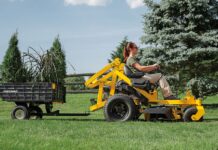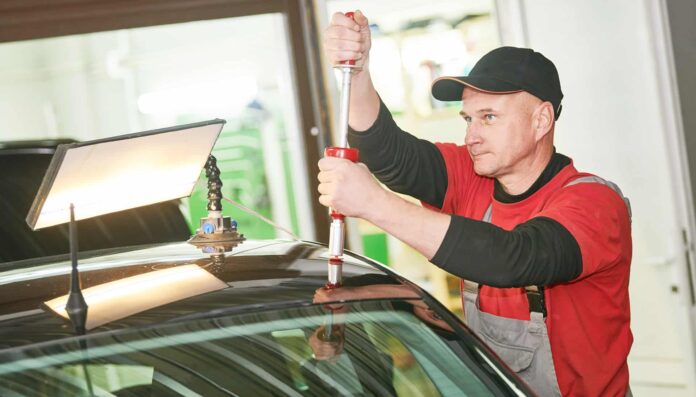
When it comes to professional dent repair, having the right tools is essential. Paintless Dent Repair (PDR) has revolutionized the automotive industry by providing a cost-effective and efficient method for restoring vehicles to their original condition.
Whether you are a seasoned PDR technician or just starting out, investing in the best PDR tools is crucial for achieving exceptional results. In this comprehensive guide, we will explore the various categories of PDR tools and delve into the factors to consider when selecting the perfect tool set for your needs.
Basic PDR Tools ─ Dent Rods, Pry Bars, and Hooks
To begin our journey into the world of PDR tools, let’s start with the basics. Dent rods, pry bars, and hooks are the fundamental tools that every PDR technician should have in their arsenal. Dent rods, often referred to as whale tails, are long, slender metal rods with different shapes and angles designed to access hard-to-reach areas behind panels.
Pry bars are used to provide leverage and gently push out dents from the inside. Hooks, on the other hand, are used to pull and manipulate the metal to restore its original shape. These tools are the building blocks of PDR and form the foundation for more advanced techniques.
Advanced PDR Tools ─ Slide Hammers, Glue Pullers, and Suction Cups
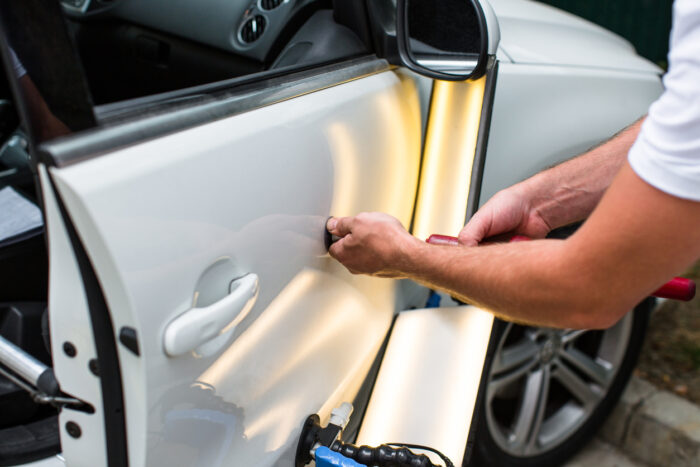
As you progress in your PDR skills, it becomes essential to incorporate advanced tools into your repertoire. Slide hammers, glue pullers, and suction cups are among the tools that will take your dent repair game to the next level. A slide hammer is a weighted tool that allows for powerful pulling force, making it ideal for larger and more stubborn dents.
Glue pullers utilize special adhesive tabs and a pulling device to extract dents from the exterior surface. Suction cups, on the other hand, create a vacuum seal and provide controlled lifting action for precise dent removal. These advanced tools offer versatility and efficiency in tackling a wide range of dent sizes and complexities.
Dent Removal Accessories ─ Knockdowns, Blending Hammers, and Tap Downs
While the primary focus in PDR is on the tools used to manipulate the metal, dent removal accessories play a crucial role in achieving flawless results. Knockdowns, blending hammers, and tap downs are some of the accessories that assist in the fine-tuning of dents and restoring the original contours of the vehicle. Knockdowns are blunt-ended tools used to tap down high spots, allowing for a smooth and even surface.
Blending hammers have various angled heads to access different areas and manipulate the metal subtly. Tap downs, with their rubberized tips, provide controlled strikes to refine the finishing touches. These accessories complement the best PDR tools and help achieve a seamless repair.
Specialized PDR Tools ─ PDR Lights and Line Boards
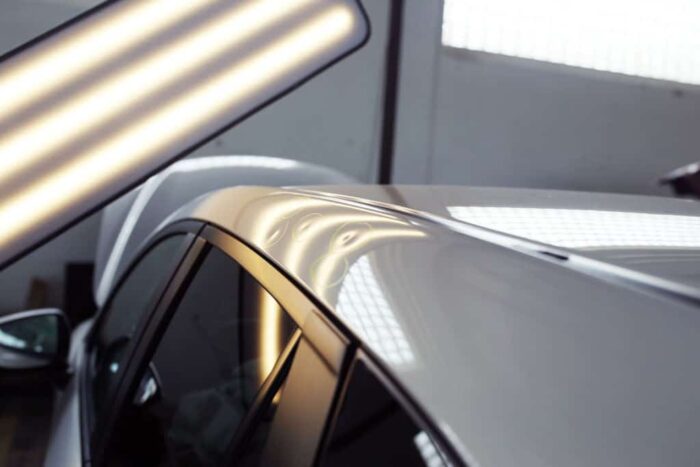
Specialized PDR tools, such as PDR lights and line boards, are indispensable for identifying and assessing the intricacies of dents. PDR lights, also known as reflector boards, are positioned behind the damaged panel to create a contrast that reveals the extent of the dent.
This illumination allows the technician to accurately gauge the progress of the repair and ensure a flawless outcome. Line boards, consisting of a reflective board and multiple parallel lines, provide a visual reference to assess the straightness of panels. By using these specialized tools in combination with the best PDR tools, technicians can achieve precise and accurate repairs.
Choosing the Right PDR Tool Set for Your Needs
Selecting the right PDR tool set can be a daunting task, given the wide array of options available in the market. To make an informed decision on the best PDR tools for your needs, consider the following factors:
Versatility
Look for a toolset that offers a diverse range of tools, allowing you to handle various dent sizes and types. Versatile ones provide flexibility and adaptability, ensuring you have the right instrument for any repair job.
Quality and Durability
Invest in PDR tools made from high-quality materials, such as stainless steel or carbon fiber. These materials offer strength, longevity, and resistance to corrosion. Durable ones will withstand the rigors of daily use and provide consistent performance over time.
Ergonomics and Comfort
PDR work often requires extended periods of manual labor. Therefore, it’s essential to choose tools with ergonomic designs and comfortable grips. Those with cushioned handles or ergonomic shapes minimize fatigue and improve overall efficiency.
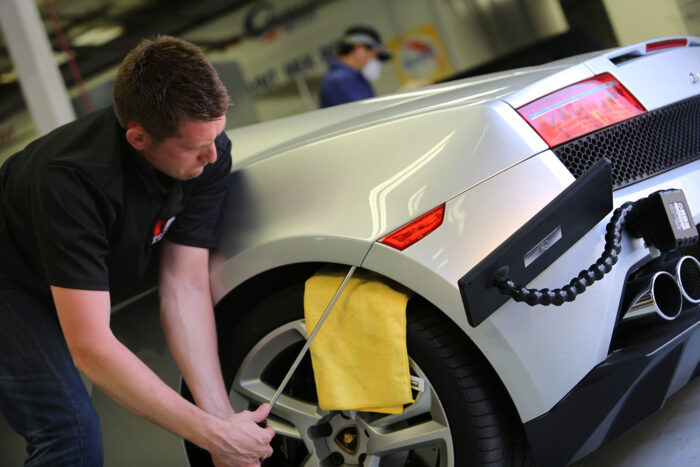
Precision and Control
Look for tools that allow precise control over dent manipulation. Those with adjustable heads or interchangeable tips provide the ability to fine-tune the repair process. Precision and control are vital for achieving seamless results.
Portability and Organization
Consider the portability and organization of the toolset. Opt for compact and lightweight tools that are easy to carry to different repair locations. Additionally, choose sets that come with a convenient storage case or bag to keep them organized and protected.
Reviews and Recommendations
Before making a purchase, read reviews and seek recommendations from experienced PDR technicians. Their insights can provide valuable guidance in selecting the best PDR tool set that aligns with your specific requirements.
Investing in High-Quality PDR Tools for Professional Results
Mastering the craft of PDR requires not only skill and experience but also the right set of tools. Whether you are a seasoned technician or a beginner in the field, having the best PDR tools at your disposal is crucial for achieving professional-quality results.
Remember to maintain and care for your PDR tools properly. Clean them regularly, store them in a safe place, and conduct routine inspections to ensure their optimal condition. By taking care of your tools, you guarantee their longevity and reliability throughout your dent repair career.
In conclusion, mastering the art of PDR is a combination of skill, experience, and having the right tools at your disposal. Choose the best PDR tools that suit your needs, and with practice and dedication, you’ll be well on your way to achieving exceptional results in the field of dent repair.

